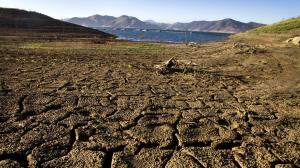This year the Earth experienced the warmest April on record, keeping 2016 on track to be the hottest year yet and by the biggest margin ever.

New data released by NASA put this April’s land and sea temperatures at 1.11 degrees Celsius warmer than average April temperatures between 1951 to 1980, which NASA uses as a reference point to study recent climate change. It was the seventh month in a row to rise by at least 1 degree Celsius above the 1951-80 reference averages.
The data that just keeps getting worse has prompted scientists to declare a “climate emergency” and is already casting doubts on pledges made in the Paris agreement to keep temperature rises well below the 2 degrees Celsius that scientists say will have catastrophic consequences on the planet.
The agreement was hammered out in December but signed in record-breaking April, with the ambitious aim to cap temperature rises at 1.5 degress Celsius compared with pre-industrial levels.
Leaders also began a 10-day meeting in Bonn, Germany on Monday to follow up on the agreement and to work out just how to make these targets achievable.
Scientists and leaders have agreed that global greenhouse gas emissions will need to peak soon and be followed by quick reductions over the years ahead to contain temperature rises.
“In the second half of the century those emissions need to be so low they can be easily absorbed by the Earth’s natural systems such as forests and soils,” the U.N. Framework Convention on Climate Change said in a statement.
Temperature rises have had a boost in the past year from a strong El Nino, a weather event characterized by the warming of ocean waters in the tropical Pacific Ocean that brings extreme weather, including drought and heavy rains, to other parts of the world.
There is hope that a La Nina may be creeping in, which typically cools the Pacific waters.
Beyond two degrees
So what happens if the planet breaches the two degrees of warming threshold? Nothing good, according to reports reviewed by CNN’s John Sutter, who has written extensively on the subject.
Sutter — who pulled reports from the National Research Council, the Intergovernmental Panel on Climate Change and the World Bank — says wildfires in the United States could significantly increase in size, hurricanes would be slightly more intense, more species would be at risk for extinction, Arctic ice would continue to melt, crop yields would decrease and the availability of freshwater would significantly decline.






